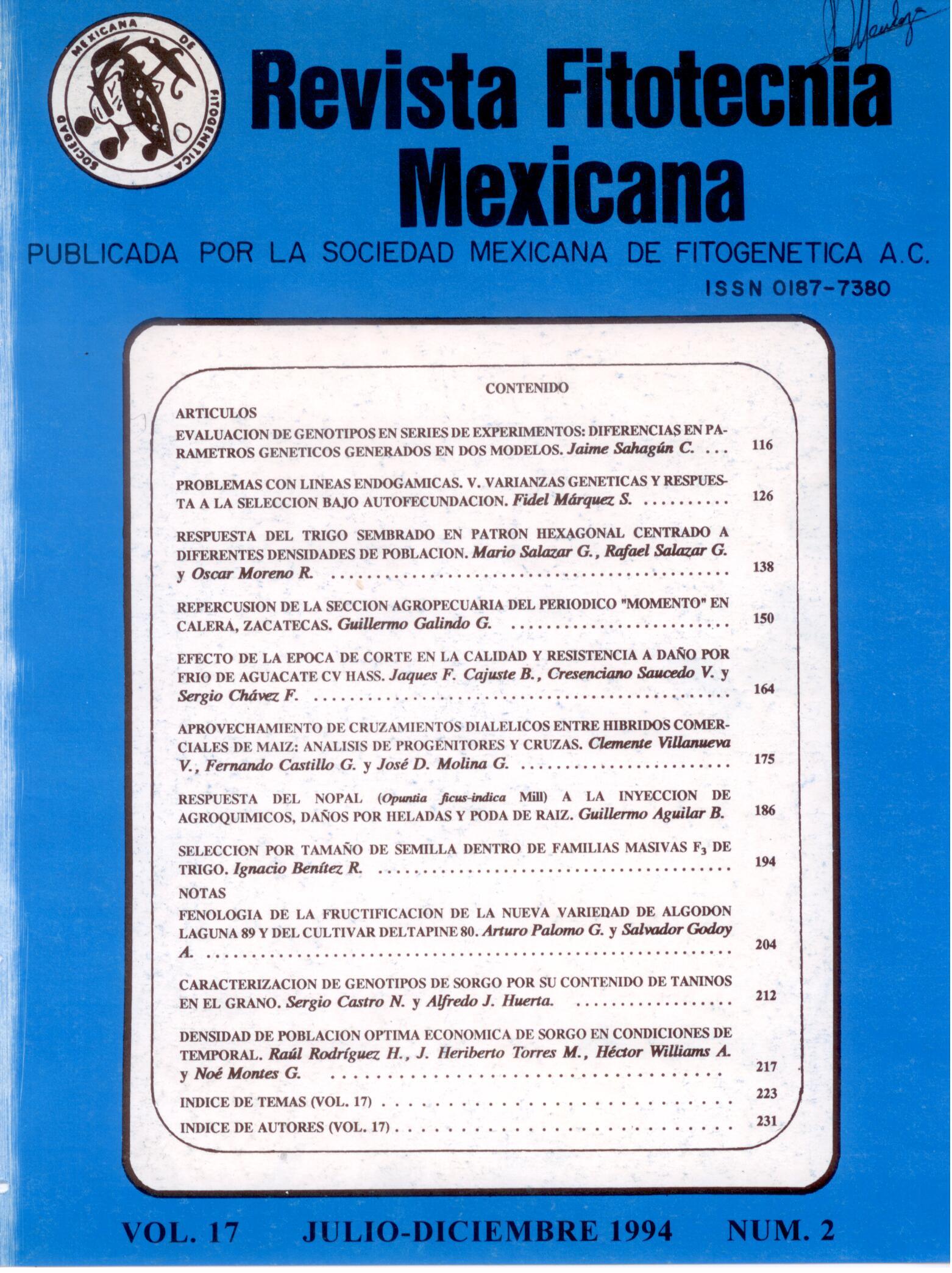PROBLEMS WITH INBRED LINES. V. GENETIC VARIANCES AND SELECTION RESPONSE UNDER SELFING
Main Article Content
Abstract
It is important for the breeder of alogamous plants who uses selfed lines as selection units, to know the mathematical expression of the genetic variation between and within lines. It also is of importance to know the selection response relative to other recurrent selection methods that use non-inbred families as units of selection such as half-sibs and full-sibs families. In the literature on the matter formulae are presented that give the genetic variation among individual plants, that is, the total genetic variation of
the selfed population, obtained through the method for non random mating populations. lt also have been presented formulae for the genetic variances between selfed lines for equal gene frequencies (p = q = 1/2) without showing the average effect of a gene
substitution, a parameter determinant of the additive genetic variance. In this research general formulae of the genetic variation, additive and dominance, between and within selfed lines are derived through the general method of regression of genotypic values on the number of favorable genes. The particular case of the use of S1 and S2 lines are presented in sorne detail. These lines are used in maize breeding for recurrent selection ata certain degree. Formulae for the response to selection also are presented. It is
concluded that, in spite of the S1 S2 selection methods take longer than the other known methods, it is required only two years per selection cycle if a winter nursery is available for hand pollination work, the selection-evaluation phase being carried out in the regular sowing season, in our country the springsummer season. As methods that use non inbred families as selection units require one year per selection cycle, in that situation S1, and S2 selection methods become better than the non inbred families selection methods.

